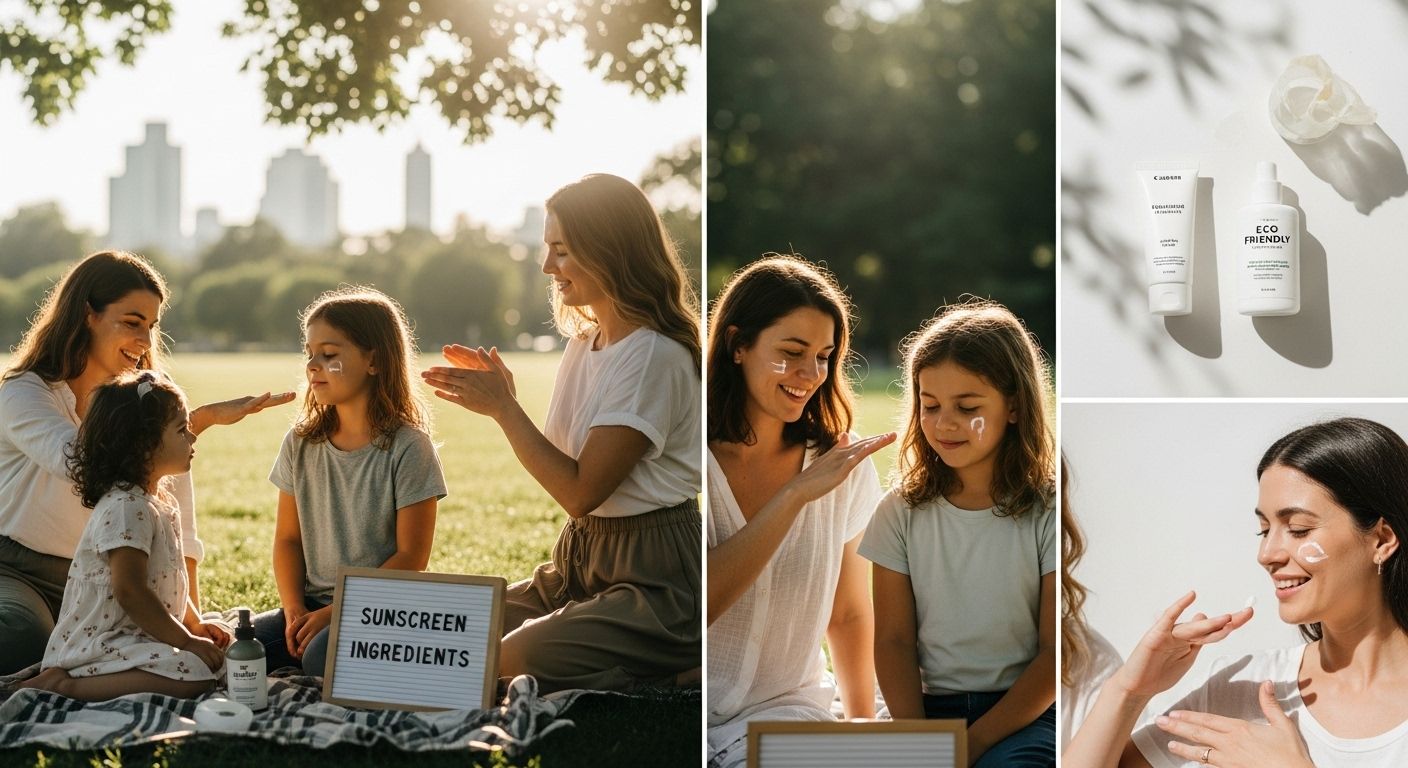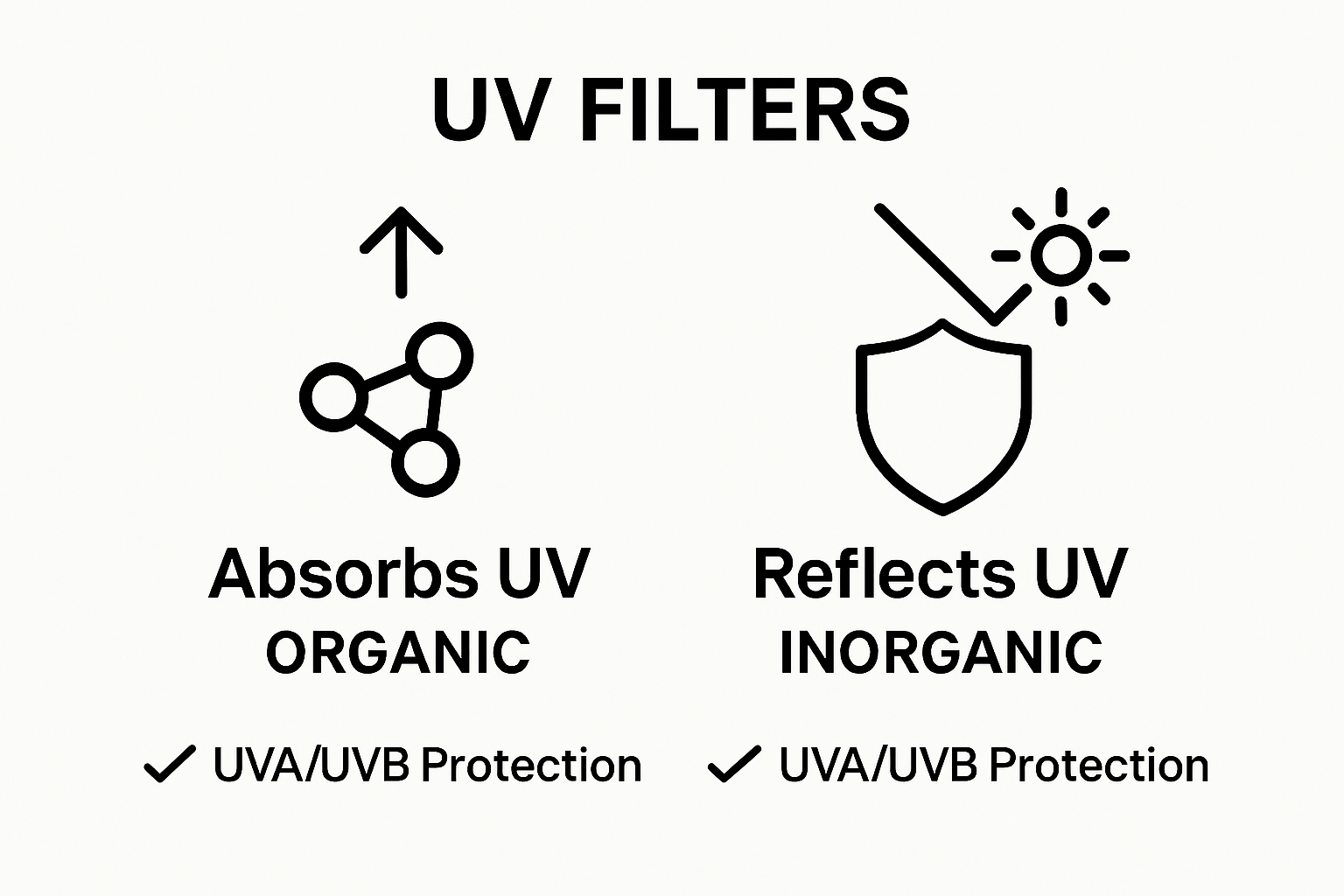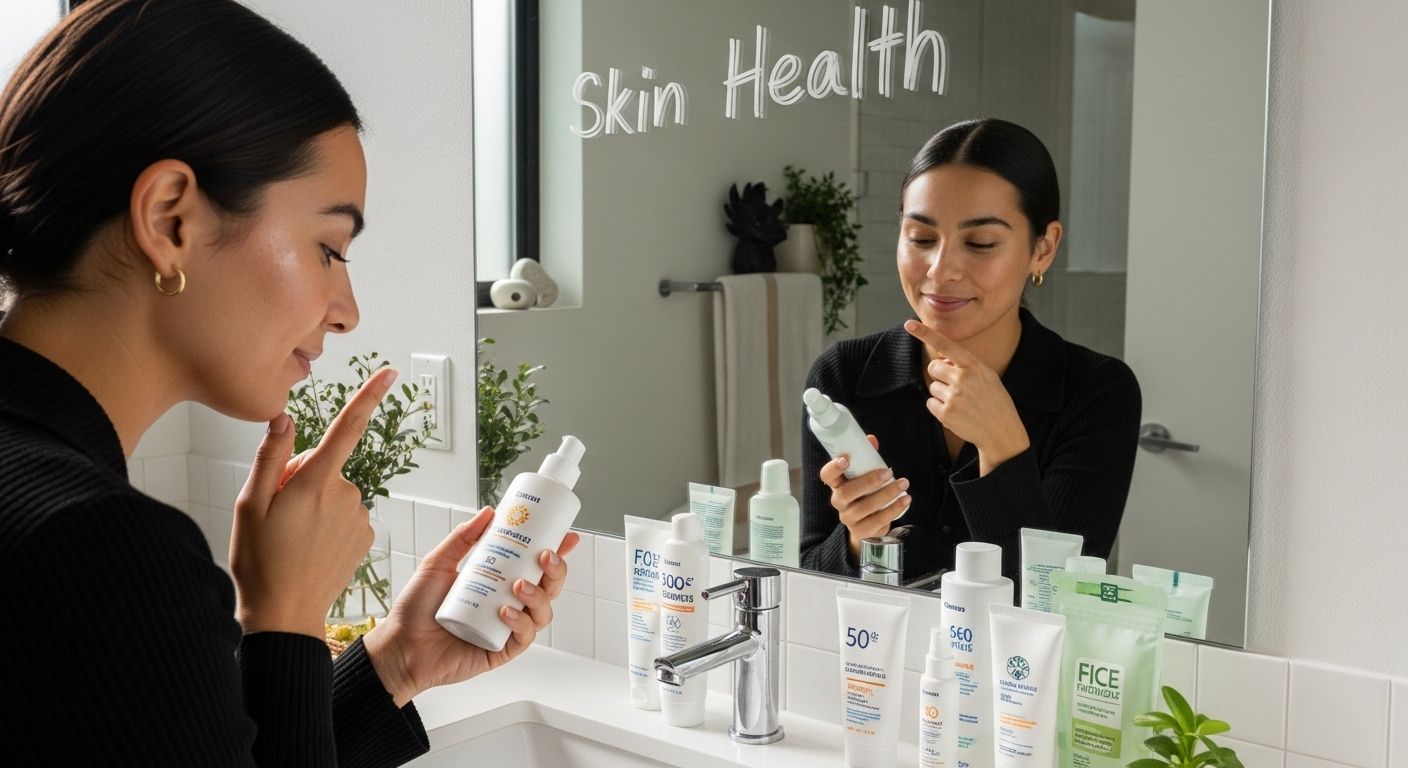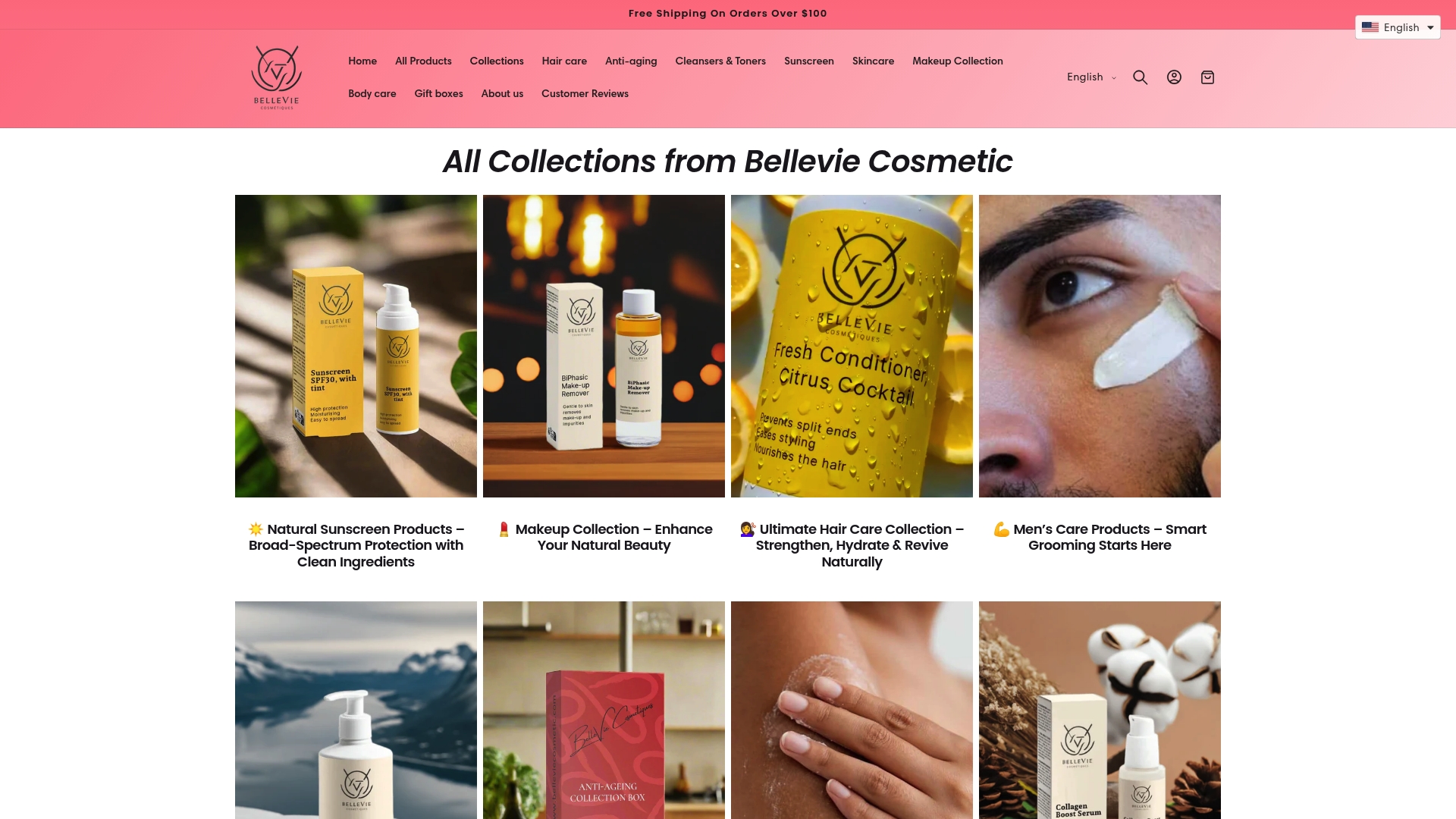
Every summer, millions of people reach for sunscreen hoping to block out sun damage and keep their skin safe. Most believe that any sunscreen on the shelf does the job equally well. But studies show that choosing the right combination of sunscreen ingredients can lower your risk of skin cancer and premature aging significantly. This hidden science behind sunscreen ingredients might just change the way you shop for sun protection forever.
Table of Contents
- What Are Sunscreen Ingredients And Their Types?
- Why The Right Ingredients Matter For Skin Health
- How Sunscreen Ingredients Protect Against UV Rays
- Key Ingredients To Look For In Effective Sunscreens
- Understanding The Impact Of Ingredients On Different Skin Types
Quick Summary
| Takeaway | Explanation |
|---|---|
| Choose broad-spectrum sunscreen | Protects against both UVA and UVB rays, reducing skin damage risks. |
| Mineral filters suit sensitive skin | Zinc oxide and titanium dioxide offer gentle, effective protection without irritation. |
| Ingredient selection affects skin health | Selecting suitable ingredients can enhance skin protection and overall health benefits. |
| Consider skin type when choosing sunscreen | Different skin types respond differently, necessitating tailored sunscreen formulations. |
| Check for photostability of ingredients | Ingredients should maintain effectiveness in sunlight to ensure lasting protection. |
What are Sunscreen Ingredients and Their Types?
Sunscreen ingredients are critical protective compounds designed to shield the skin from harmful ultraviolet (UV) radiation. These specialized molecules work by either absorbing, reflecting, or scattering solar rays to prevent skin damage. Understanding the composition and functionality of sunscreen ingredients is essential for effective sun protection.
Organic vs Inorganic UV Filters
Sunscreen ingredients are primarily categorized into two fundamental types: organic (chemical) and inorganic (physical) UV filters. Each type operates differently to protect skin from solar radiation.

Organic UV Filters:
- Absorb UV radiation and convert it into less harmful heat energy
- Typically include compounds like avobenzone, octinoxate, and oxybenzone
- Penetrate the skin’s surface to provide protection
- Often lighter and more cosmetically elegant in formulation
Inorganic UV Filters:
- Physically block and reflect UV rays from the skin’s surface
- Primarily composed of minerals like zinc oxide and titanium dioxide
- Create a protective barrier that prevents radiation from penetrating the skin
- Traditionally known for leaving a white cast on the skin
According to research from the National Center for Biotechnology Information, the effectiveness of sunscreen depends on the specific combination and concentration of these UV filters.
To help clarify the distinctions between organic and inorganic sunscreen ingredients, the following table compares their key characteristics and typical usage scenarios.
| Type | Mechanism of Action | Common Ingredients | Typical Suitability | Notable Characteristics |
|---|---|---|---|---|
| Organic (Chemical) | Absorb UV and convert to heat | Avobenzone, Octinoxate, Oxybenzone | Normal to oily skin | Lightweight feel, may cause irritation |
| Inorganic (Physical) | Reflect and scatter UV rays | Zinc oxide, Titanium dioxide | Sensitive/reactive skin | Gentle, may leave white cast |
Key Considerations in Sunscreen Ingredient Selection
Selecting the right sunscreen involves understanding how different ingredients interact with your skin type and provide protection. Some key factors include broad spectrum coverage, photostability, and potential skin sensitivity. Check out our guide on choosing the right sun protection for more detailed insights into making an informed selection.
The goal is to choose sunscreen ingredients that offer comprehensive protection while being compatible with your individual skin needs and preferences.
Why the Right Ingredients Matter for Skin Health
Choosing the right sunscreen ingredients goes far beyond simple sun protection. These specialized compounds play a critical role in maintaining overall skin health, preventing long-term damage, and supporting the skin’s natural defense mechanisms.
Protecting Against Cellular Damage
UV radiation can cause significant cellular damage by generating free radicals that break down collagen, damage DNA, and accelerate skin aging. Selecting the appropriate sunscreen ingredients is crucial in mitigating these harmful effects. Different UV filters provide varying levels of protection against UVA and UVB rays, which can cause different types of skin damage.
Key Cellular Protection Mechanisms:
- Neutralizing free radical formation
- Preventing DNA mutations
- Reducing inflammation triggered by solar radiation
- Supporting skin’s natural repair processes
According to research from the National Council on Skin Cancer Prevention, using a broad-spectrum sunscreen with the right ingredients can significantly reduce the risk of skin cancer and premature aging.
Long-Term Skin Health Considerations
Beyond immediate protection, sunscreen ingredients impact skin health at a molecular level. Some ingredients offer additional benefits like antioxidant properties, hydration, and skin barrier support. Explore our guide to natural skincare ingredients to understand how strategic ingredient selection can transform your skin protection routine.
People with sensitive skin, specific skin conditions, or those prone to allergic reactions must be particularly careful about sunscreen ingredient selection. Mineral-based ingredients like zinc oxide and titanium dioxide are often recommended for their gentle, non-irritating properties while providing comprehensive protection against harmful solar radiation.
How Sunscreen Ingredients Protect Against UV Rays
Understanding how sunscreen ingredients shield the skin from ultraviolet radiation requires insight into their complex molecular interactions and protective mechanisms. These specialized compounds work through intricate processes that neutralize and block harmful solar energy before it can damage skin cells.
Mechanism of UV Ray Absorption and Reflection
Sunscreen ingredients employ two primary strategies to protect against UV radiation: absorption and reflection. Organic chemical filters capture incoming UV rays, transforming solar energy into minimal heat, while inorganic mineral filters create a physical barrier that reflects and scatters radiation away from the skin surface.
Key UV Protection Mechanisms:
- Converting UV energy into less harmful thermal energy
- Creating a protective molecular shield
- Interrupting potential cellular damage pathways
- Preventing direct radiation penetration into skin layers
According to research from the U.S. Food & Drug Administration, different sunscreen ingredients interact uniquely with solar radiation to provide comprehensive protection.
Targeted Protection Against Different UV Wavelengths
Not all UV rays are identical. Sunscreen ingredients are specifically engineered to block different wavelengths: UVA rays (associated with premature aging) and UVB rays (responsible for sunburn). Learn more about advanced sun protection techniques to understand how strategic ingredient selection offers multi-spectrum defense.
The molecular complexity of sunscreen ingredients allows for nuanced protection, ensuring that skin remains shielded from both immediate and long-term solar radiation damage. By understanding these intricate protective mechanisms, individuals can make more informed choices about their sun protection strategies.
Key Ingredients to Look for in Effective Sunscreens
Selecting the right sunscreen involves understanding the critical ingredients that provide comprehensive protection and support overall skin health. Not all sunscreen ingredients are created equal, and identifying the most effective components can significantly enhance your sun protection strategy.
Mineral-Based UV Protectors
Mineral sunscreen ingredients represent a gold standard for safe and effective sun protection. Zinc oxide and titanium dioxide are two primary mineral filters that offer broad-spectrum defense against harmful solar radiation.
Advantages of Mineral UV Filters:
- Create immediate physical barrier against UV rays
- Suitable for sensitive and reactive skin types
- Provide stable protection without chemical degradation
- Minimize potential skin irritation
These mineral ingredients work by sitting on the skin’s surface, reflecting and scattering UV radiation before it can penetrate deeper skin layers.
According to research from the U.S. Food and Drug Administration, certain ingredients have been rigorously evaluated for safety and effectiveness in sun protection.
Chemical UV Filters and Advanced Ingredients
Chemical sunscreen ingredients like avobenzone, octinoxate, and octocrylene offer alternative protection mechanisms. These compounds absorb UV radiation, converting solar energy into minimal heat. Discover our comprehensive guide to natural sunscreen benefits to understand how advanced ingredients can transform your skin protection routine.
Beyond traditional UV filters, modern sunscreens increasingly incorporate additional beneficial ingredients such as antioxidants, hyaluronic acid, and botanical extracts. These components not only protect against sun damage but also provide hydration, repair support, and additional skin health benefits.
Understanding the Impact of Ingredients on Different Skin Types
Sunscreen ingredients interact uniquely with various skin types, making personalized selection crucial for effective protection and preventing potential adverse reactions. Understanding how different compounds respond to individual skin characteristics is essential for maintaining optimal skin health and comfort.
Sensitivity and Reactive Skin Considerations
Individuals with sensitive skin require careful ingredient selection to avoid potential irritation or allergic responses. Mineral-based sunscreens with zinc oxide and titanium dioxide typically offer the most gentle protection, creating a physical barrier without penetrating the skin’s deeper layers.
Key Considerations for Sensitive Skin:
- Minimize chemical filter concentrations
- Prioritize hypoallergenic formulations
- Avoid potential irritants like oxybenzone
- Test new products on small skin areas first
According to research examining sunscreen safety, certain chemical ingredients can potentially trigger skin reactions, making ingredient awareness critical for those with reactive skin types.
Skin Type Specific Ingredient Responses
Different skin types absorb and interact with sunscreen ingredients distinctly. Oily and acne-prone skin benefits from lightweight, non-comedogenic formulations, while dry skin requires ingredients that provide additional hydration. Learn more about personalized skincare approaches to understand how targeted ingredient selection can address specific skin concerns.
Understanding your skin’s unique characteristics helps select sunscreen ingredients that not only protect against UV radiation but also support overall skin health and comfort. The goal is finding a balanced formulation that provides comprehensive protection without compromising skin’s natural balance.
The following table summarizes key sunscreen ingredient considerations for different skin types, helping you choose the most suitable formulation for your needs.
| Skin Type | Recommended Ingredients | Characteristics | Cautions |
|---|---|---|---|
| Sensitive Skin | Zinc oxide, Titanium dioxide | Gentle, non-irritating | Avoid oxybenzone, high fragrance |
| Oily/Acne-Prone | Non-comedogenic chemical filters | Lightweight, oil-free | Avoid heavy creams, oils |
| Dry Skin | Mineral filters plus hydrating agents | Provides moisture, barrier support | May need added humectants |
| Normal/Combination | Broad-spectrum mix | Balanced protection | Match preferences, texture |

Ready for Real Sun Protection? Discover Clean Ingredients for Every Skin Type
If you are worried about hidden chemicals and irritation from conventional sunscreens, you are not alone. The article highlights how confusing sunscreen ingredients can be, especially for sensitive skin or those seeking true broad-spectrum protection. Many people struggle to find sunscreen that will block damaging UVA and UVB rays, prevent premature aging, and actually feel good on their skin without harsh chemicals or white residue.
Experience the difference of clean, clinically proven skincare at BelleVieCosmetic.com. Our award-winning SPF50 mineral sunscreen stick is formulated with gentle, safe ingredients like zinc oxide for immediate physical protection that looks invisible and feels light. Shop our full sunscreen and skincare collection to find products that match your unique skin needs. Take the next step towards healthier skin—visit us now and see why more people are making the clean-switch today.
Frequently Asked Questions
What are the different types of sunscreen ingredients?
Sunscreen ingredients are primarily categorized as organic (chemical) UV filters and inorganic (physical) UV filters. Organic filters absorb UV radiation, while inorganic filters reflect and scatter it, providing physical protection.
How do organic and inorganic sunscreen ingredients differ in their function?
Organic UV filters absorb UV radiation and convert it into heat, while inorganic filters create a physical barrier on the skin’s surface to reflect UV rays. This means organic sunscreens may feel lighter, but inorganic options are often better for sensitive skin.
Why is it important to choose broad-spectrum sunscreen?
Broad-spectrum sunscreen protects against both UVA and UVB rays, which can cause different types of skin damage. Using a broad-spectrum product significantly reduces the risk of skin cancer and premature aging.
What should individuals with sensitive skin look for in sunscreen ingredients?
Individuals with sensitive skin should prioritize mineral-based sunscreens containing zinc oxide or titanium dioxide, as these tend to be gentler and less likely to cause irritation compared to chemical filters.
💬 Not sure which sunscreen ingredients are safest and most effective for your skin?
Chat directly with our AI Skincare Advisor on Instagram and get personalized sunscreen recommendations.
👉 Start Chat Now on Instagram AI

